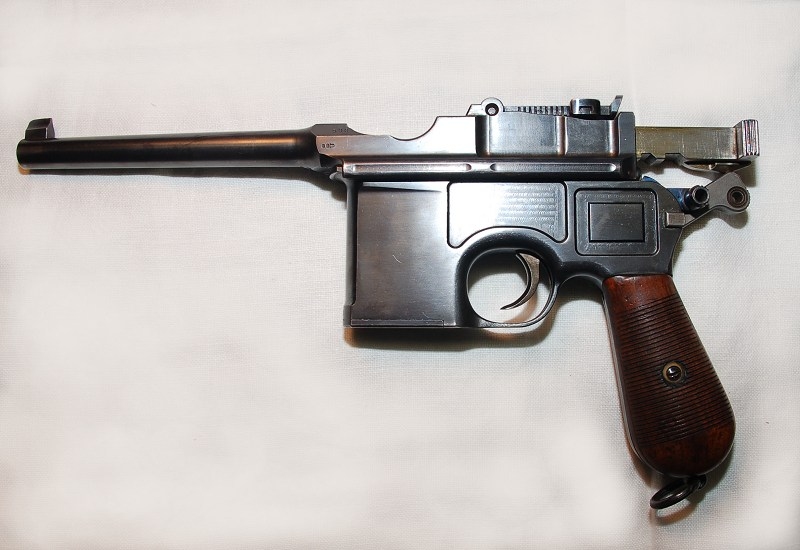| Remington Brand | Browning Brand | Winchester Brand | Mauser Gun |

|
|
Info Mauser C96 Broomhandle
The C96 was designed by Fidel, Friedrich and Josef Feederle. At the time Fidel Feederle was employed as Superintendent of the Mauser Experimental Workshop1. Originally known as the P-7.63 or 'Feederle Pistol', it was renamed by Paul Mauser as the 'Mauser Military Pistol'.
In the absence of factory records which show when which pistol was made (or even the number of pistols made in any given year), C96 owners have attempted to determine the year that their specific pistol was produced based on serial number. Such attempts are fraught with peril. In the early years of production the big Mauser pistol was not especially popular, and sales were poor. In order to make it appear that more pistols had been sold than was actually the case, Mauser skipped blocks of serial numbers. In the later years it appears that some attempt was made to fill in these missing blocks of numbers. To add to the confusion pistols made under contract were usually (but not always) serial numbered in their own series, beginning with number "1". All of which means that pistols which appear, based on their serial number, to have been made early may actually have been made much later. The converse is also true.
The first successful prototype was dated 15th March 1895 and on 11th December 1895, its German patent was issued3. During 1896 some 110 pre-production pistols were built. Full scale production started in April 1897.
A US patent (#584479) was granted on 15th June 1897.4 Previously patents had been granted during 1896 in Great Britain (#959), Switzerland (#11943), Belgium (#119462) and several other countries, including Brazil (#2088).5 With only a slight interruption after 1918, production of the Broomhandle Mauser continued until the late 1930's.
The C96 was the first efficient and reliable design for a self-loading pistol. An outstanding feature of the design was the absence of pins or screws in its construction. The design is based upon the frame being milled out from a solid forging, rather than a separate pieces. The receiver and barrel are formed from a single forging. This means that unfortunately a lot of present day C96's have 'shot-out' barrels, and as they cannot be changed out, they have to be bored out to the larger 9mm calibre.7 Loading of the C96 is by single round, or through the use of 10-round stripper clips. The C96 was designed to use 7.63mm ammunition, however, due to military requirements, a number were converted to shoot 9mm ammunition, the same as the later available Luger pistol. These are known as the 'Red 9' C96 models.
The Imperial Russians fell in love with both the 7.63 Mauser cartridge (aka .30 Mauser) and the Mauser Military Pistol, and were to become one of Mauser's best customers. The October Revolution did not change this fondness for the C96 and the 7.63 Mauser cartridge (it is said a C96 was one of the firearms used in the murder of the Czar and the Royal Family), and both pistol and cartridge remained in general use in the early years of Communist rule.